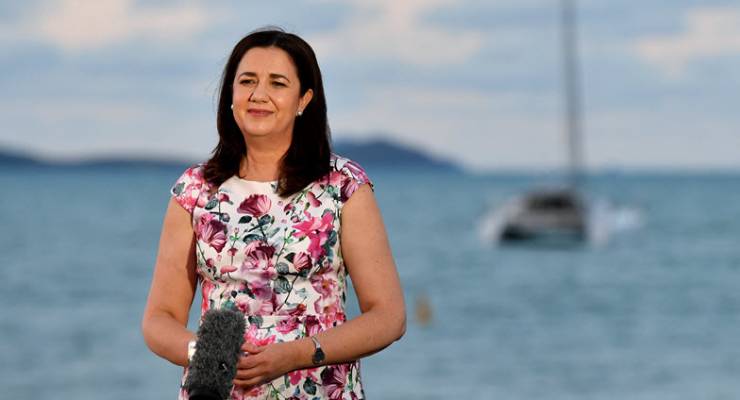
Queensland Premier Annastacia Palaszczuk
Another red-letter date has been added to Australia’s already crowded electoral calendar, after Annastacia Palaszczuk yesterday initiated a short and sharp four-week state election campaign in Queensland.
The November 25 election will come one week before the byelection Barnaby Joyce must now face in New England, a week after the Labor-versus-Greens byelection contest in the Victorian state seat of Northcote, and 10 days after the results of the same-sex marriage survey are known to the world.
Thanks to the One Nation factor, the Queensland election promises to be the most volatile and unpredictable in recent Australian history, with the party alternatively set to achieve a game-changing triumph on par with its haul of 11 seats in 1998, or once again collapse into a heap.
Should the party indeed rake in a substantial share of the parliament’s 93 seats, there is a high probability that it will emerge as the kingmaker in another hung parliament, owing to finely balanced support between the two major parties since Labor’s shock win in 2015.
This prospect leaves the opposition Liberal National Party with a familiar dilemma: either repudiate One Nation, and thereby alienate its substantial base of supporters and potential supporters, or cosy up to it in the hope of securing preferences and parliamentary support, which will expose them to a well-founded Labor campaign about the chaos that would prevail under a One Nation-backed government.
The principal advocate for plan A is former premier Campbell Newman, who helpfully took to Sky News yesterday to offer that One Nation stands to win so many seats that the LNP can only hope to form government if it agrees to do business with them.
However, it was precisely by exploiting the threat of such an outcome that Peter Beattie was able to dominate Queensland politics for a decade — and Labor’s campaign advertising bespeaks confidence that it can do so again.
Labor is not without challenges of its own, having presided over some of the nation’s highest electricity prices and a bruising downturn in the state’s north.
It is for the latter reason that the government has been so persistent in its determination to court Adani’s controversial Carmichael coal mine project, the mooted location of which is in the state’s most marginal seat.
While this provokes a backlash on the left, Labor has calculated — probably correctly — that the Greens do not have the critical mass of support required to poach any of its seats.
The Greens’ strongest prospect is the seat of South Brisbane, where it achieved a breakthrough success in the corresponding council ward of The Gabba at the Brisbane City Council election in March last year.
However, the seat has been successively held for Labor by Anna Bligh and the current Deputy Premier Jackie Trad, whose personal support has been too high a mountain to climb.
The government also divested itself of the threat of Greens voters withholding preferences from Labor, as they did to devastating effect in 2012, when it sneakily abolished optional preferential voting through a late-night parliamentary manoeuvre with the connivance of self-interested crossbenchers.
Greens voters will thus be compelled to hold their noses and pick a least-worst option out of Labor and an opposition led by Tim Nicholls, a former state Treasurer whose fingerprints are all over the record of the Newman government.
Opinion polls have shown the major parties to be running neck and neck for most of the Palaszczuk government’s time in office, but a poll trend analysis points to a break in Labor’s favour in recent months, with all pollsters but ReachTEL crediting them with a slight lead.
However, betting markets slightly favour the LNP, which presumably reflects a bullish assessment of One Nation’s chances of holding the balance of power.
For such expectations to be realised, the party will need to find a preference strategy it can unite behind, stay focused on those of its favourite issues that resonate with voters, and keep the mischief caused by its candidates within acceptable limits — none of which it proved able to do during its last big test at the Western Australian election in March.








Crikey is committed to hosting lively discussions. Help us keep the conversation useful, interesting and welcoming. We aim to publish comments quickly in the interest of promoting robust conversation, but we’re a small team and we deploy filters to protect against legal risk. Occasionally your comment may be held up while we review, but we’re working as fast as we can to keep the conversation rolling.
The Crikey comment section is members-only content. Please subscribe to leave a comment.
The Crikey comment section is members-only content. Please login to leave a comment.